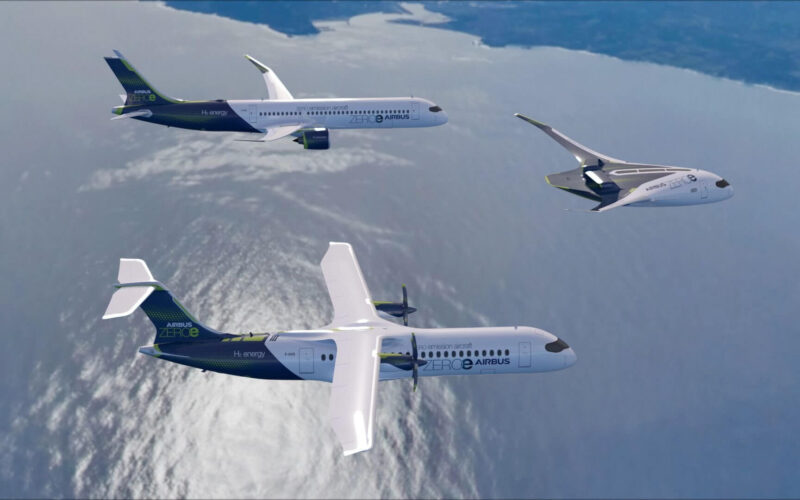Airbus will open two plants, called “Zero-Emission Development Centers”, in Bremen, Germany, and Nantes, France, to manufacture cryogenic tanks used for storing hydrogen.
The objective is to manufacture cryogenic tanks at competitive costs in order to “successfully launch the ZEROe (zero carbon emission) aircraft on the market and to accelerate the development of hydrogen propulsion technologies.”
In September 2020, Airbus unveiled three hydrogen-powered concepts, codenamed ZEROe, that the manufacturer was working on.
But to be safely stored in an aircraft, hydrogen needs to be kept at -250°C, the temperature necessary for its liquefaction. Thus, Airbus needs to integrate cryogenic tanks into the upcoming airliners. “For commercial aviation, the challenge is to develop a component that can withstand repeated thermal and pressure cycling which an aircraft application demands,” the manufacturer explained.
The two new facilities are scheduled to build their first liquid hydrogen tanks by 2023, with a first flight test scheduled for 2025. Airbus said it chose the Bremen location for its past experience in experimenting with hydrogen with Airbus Defense and Space and ArianeGroup. As for Nantes, it was selected for its skills with the integration of metal structures linked to the central wing box, such as central fuel tanks.
Airbus’ forecasted timeline for the development of hydrogen aircraft was recently revealed. In a briefing with European Union officials made public on June 10, 2021, the manufacturer said that while it aimed to develop the world’s first zero-emission commercial aircraft by 2035, most airliners would rely on traditional jet engines until at least 2050. “Zero-emission hydrogen aircraft will be primarily focused on regional and shorter-range aircraft from 2035,” the briefing read. “Which means that current and future iterations of highly efficient gas turbines will still be required as we move towards 2050, especially for long-haul operations.”
In June 2021, the French government announced that nearly €1.5 billion euros in public aid would be invested over three years to participate in “the decarbonization of world air traffic.” French Minister of the Economy Bruno Le Maire said he expected the sector to “achieve a carbon-neutral aircraft in 2035,” while industry experts usually forecast this to appear around 2050. The deadline of 2035 was described at the time as “ambitious but doable” by Eric Trappier, the CEO of Dassault Aviation and President of the French Aerospace Industries Association (GIFAS).

